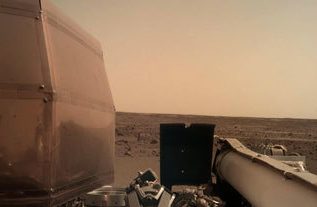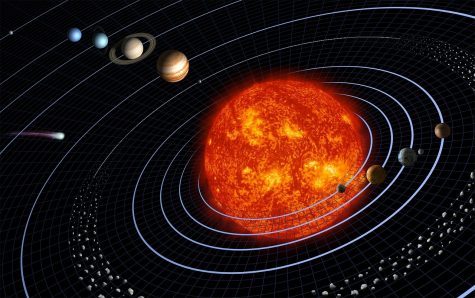Moving Forward on Mars

https://mars.nasa.gov/insight/timeline/landing/status/
A picture taken by InSight showing part of its body and surrounding Martian terrain.
Tens of millions of miles away, Mars lies in a seemingly unreachable zone. However, November 26th, 2018, brought more knowledge of the distant planet.
May 5th, 2018, NASA launched the InSight lander with the mission of landing on Mars, a part of NASA’s Discovery Program. Over six months and 300 million miles later, on November 26th, InSight reached Mars. Controlled at the Jet Propulsion Laboratory in Pasadena, California, InSight landed safely in Elysium Planitia, a relatively safe and flat plain near Mars’ equator.
“Future exploration on Mars is something that really does excite me. Being a part of the time where space exploration has grown a ton, my interest in finding new beings, past life, and even more continues to grow,” said sophomore Gargi Ramekar.
Scientists at the Jet Propulsion Laboratory exploded with joy when the lander landed safely. InSider, unlike previous missions sent to Mars, was a source of worry because of its differences, but it made it through safely.
The goal of InSider is to study the interior of Mars. Whether looking for Marsquakes or measuring the temperature with its seven-foot-long drilling arm, this exploration will help NASA map out Mars’ layers. Looking deep will not only tell NASA more about the Martian interior, it will help them understand the rest of the solar system.
“We can learn about how different temperatures and atmospheres affect different planets and how the solar system has a variety of atmospheres,” said junior Anjali Antani.
Scientists believe that billions of years ago Mars’ magnetic field vanished. Before this time, Earth and Mars were very similar. NASA scientists want to know what caused the change on Mars, which they can only do with technology like InSight.

A diagram of the solar system and planetary orbits.
Over the next few months, InSider will begin to collect data. This data could potentially help NASA answer their most pressing questions or tell the rest of the world the truth of Earth’s past. Either way, InSight is making history.






